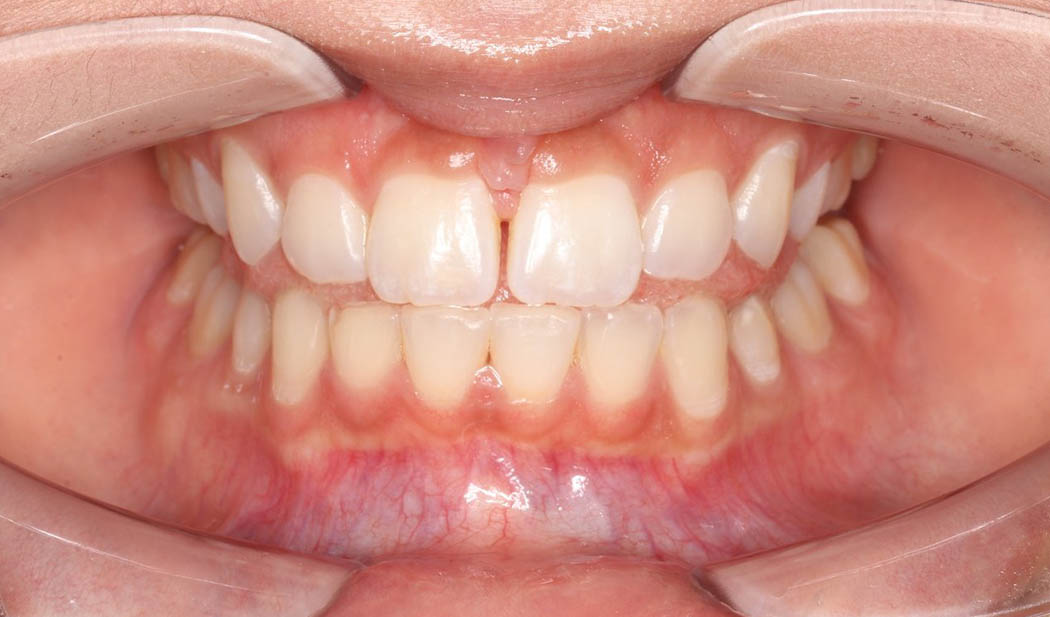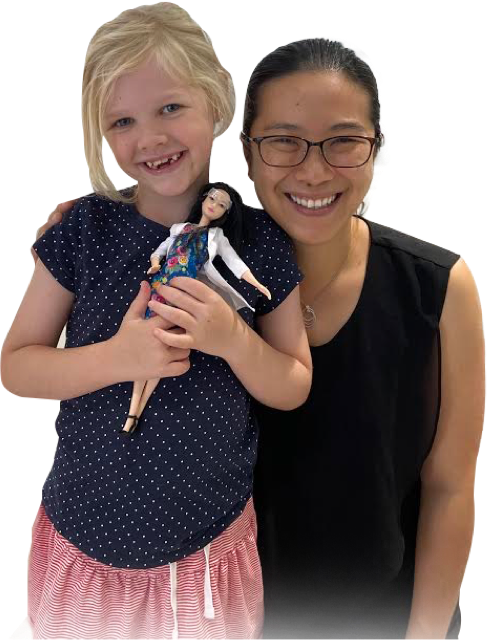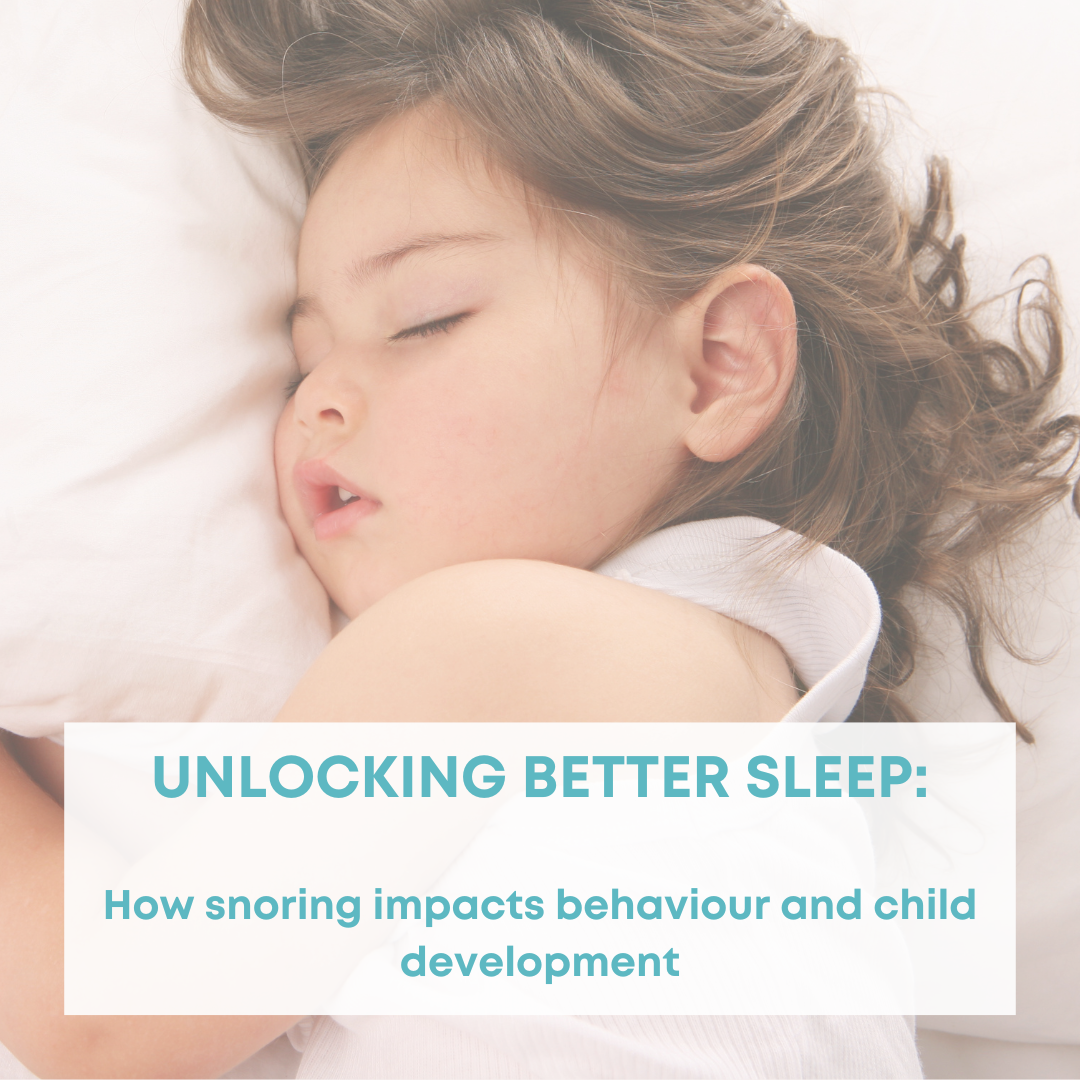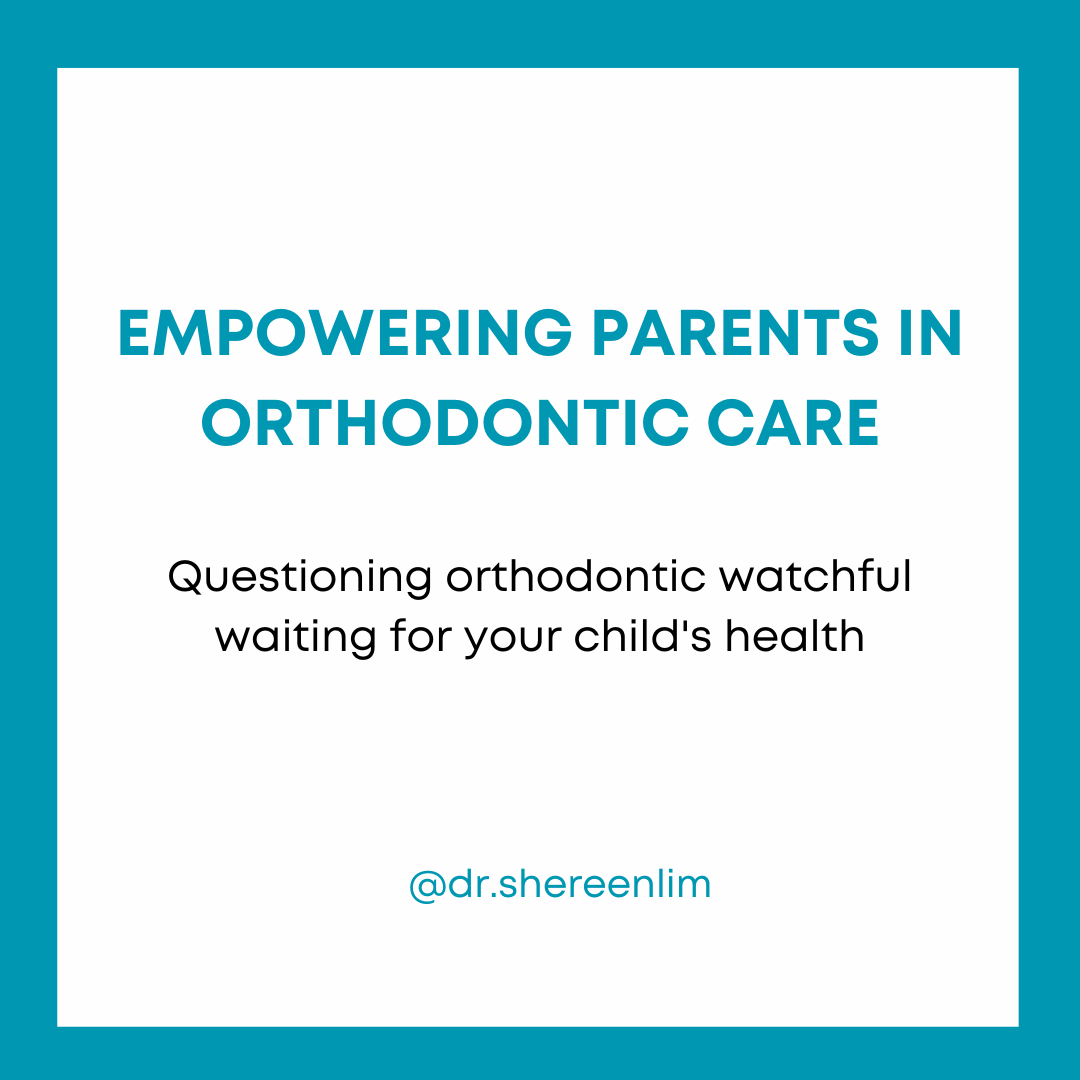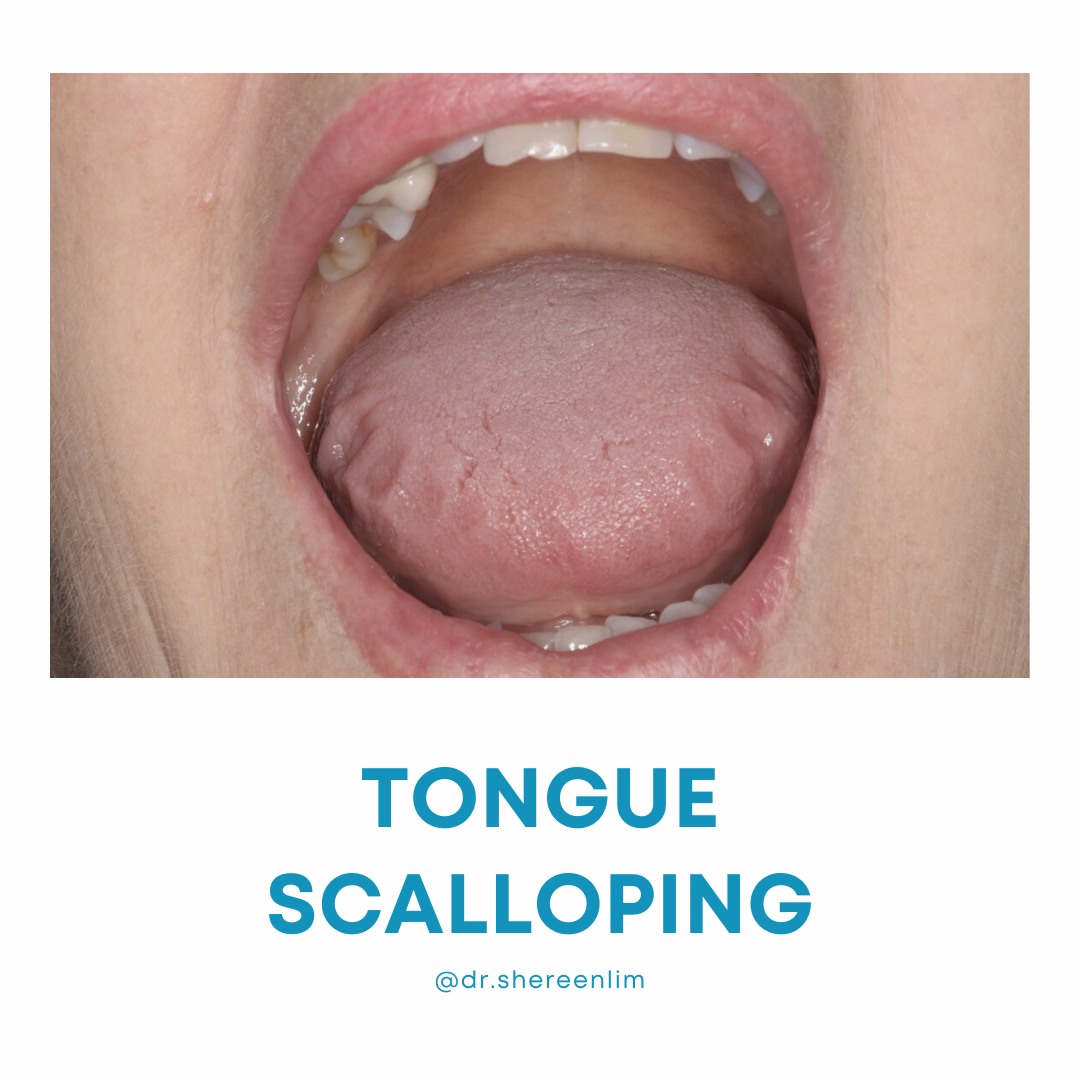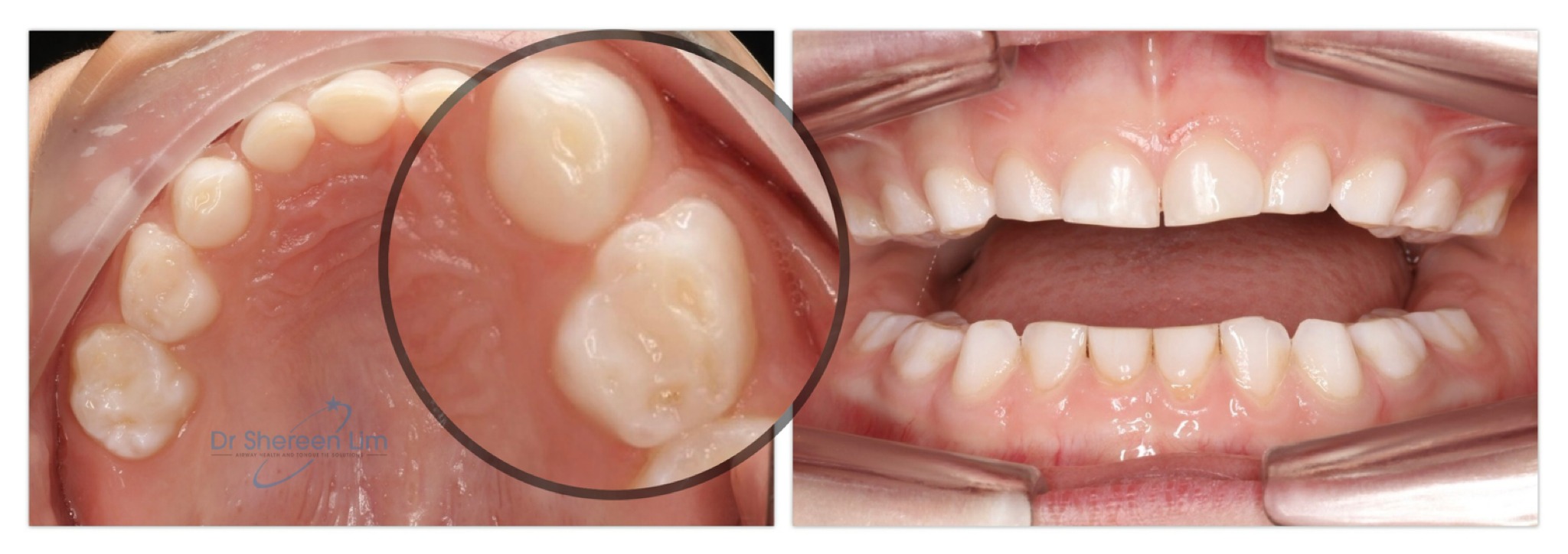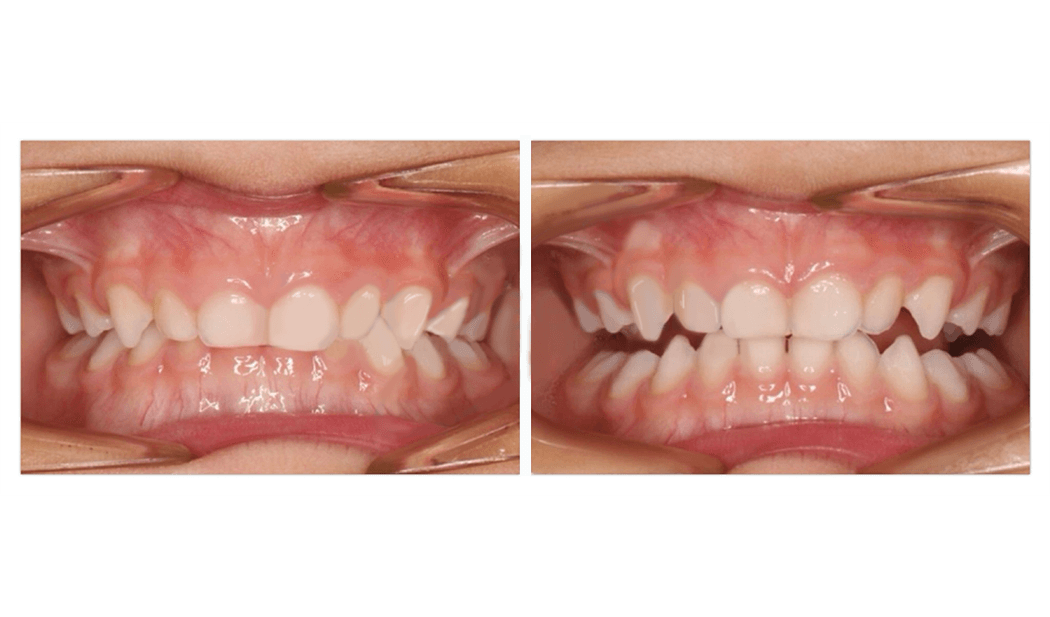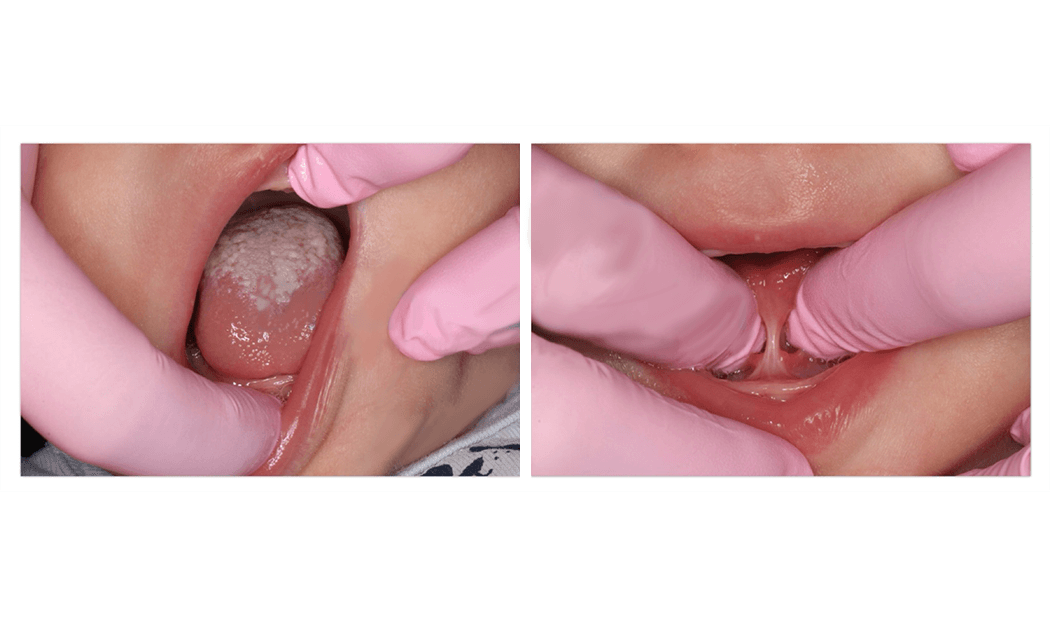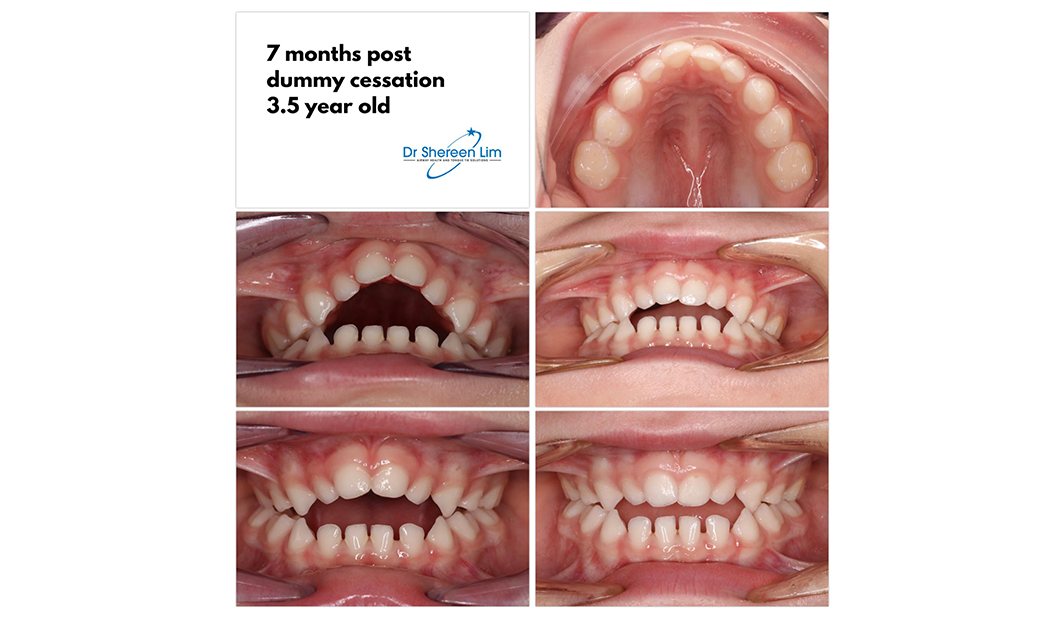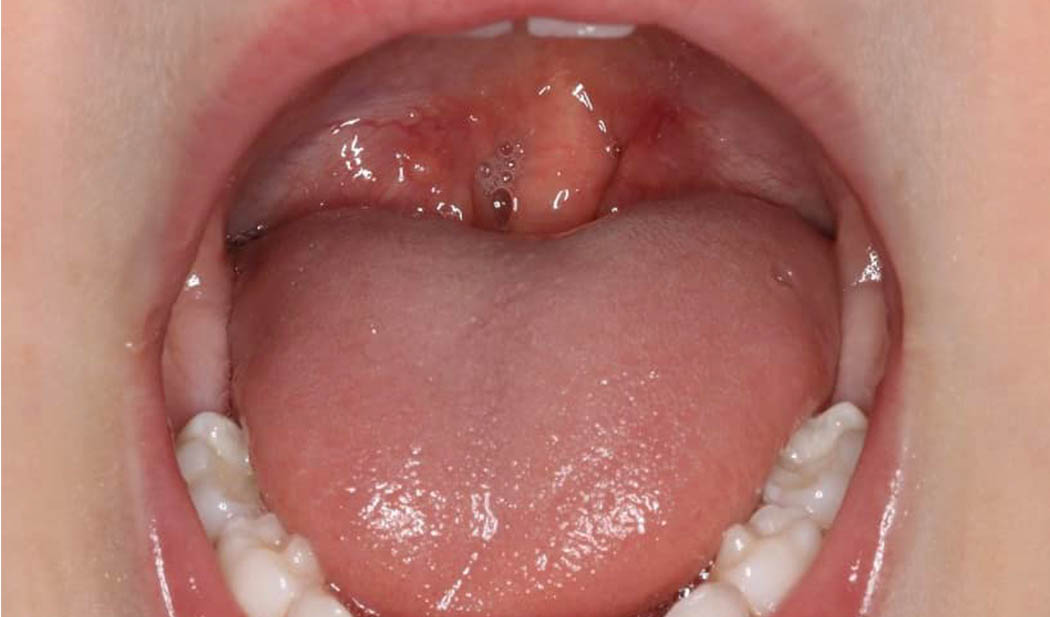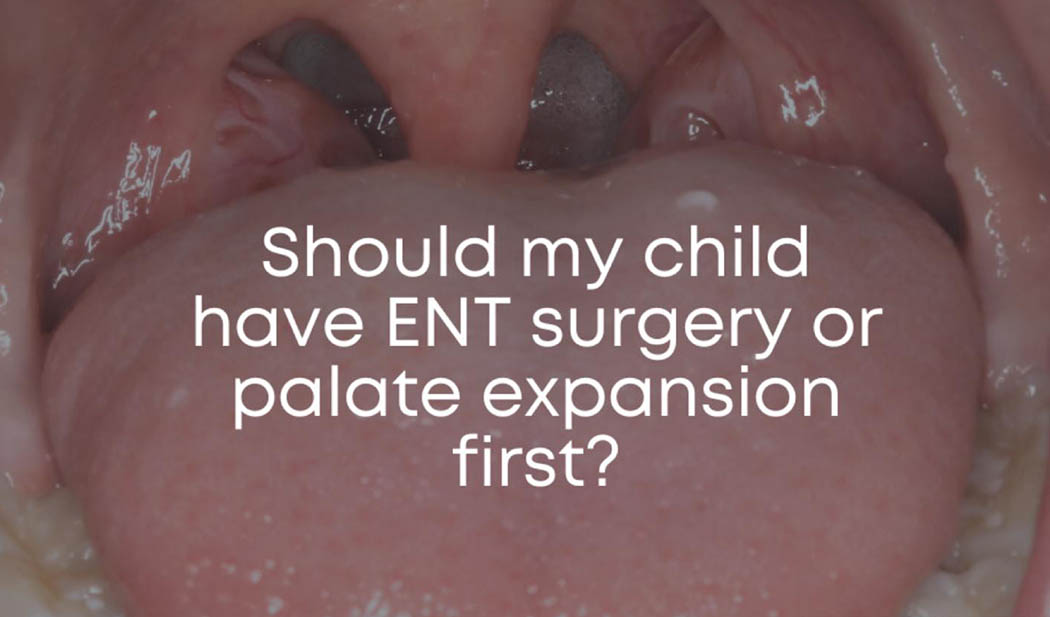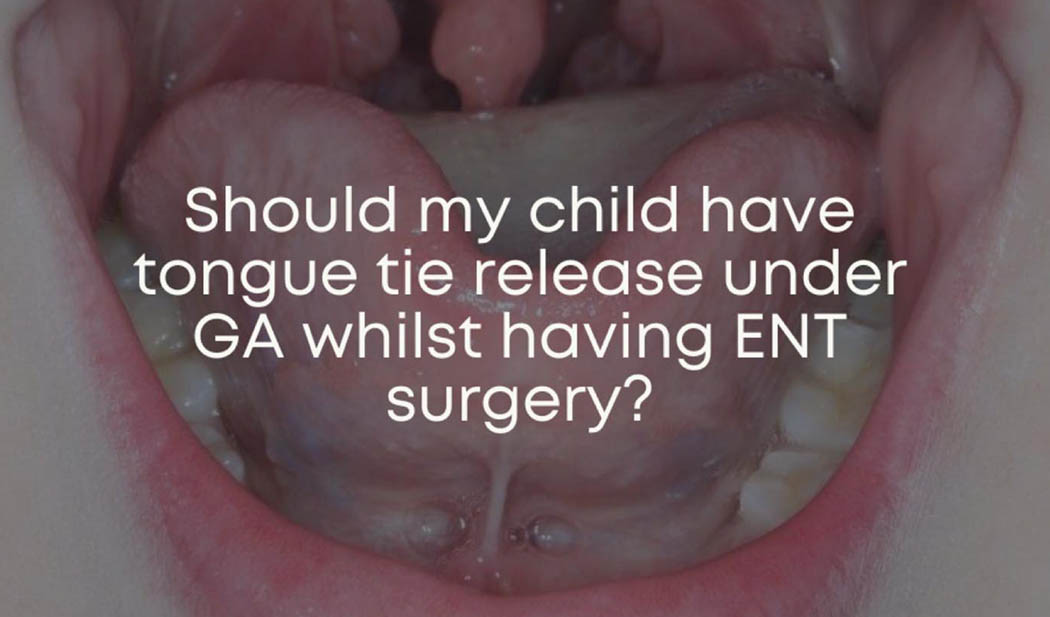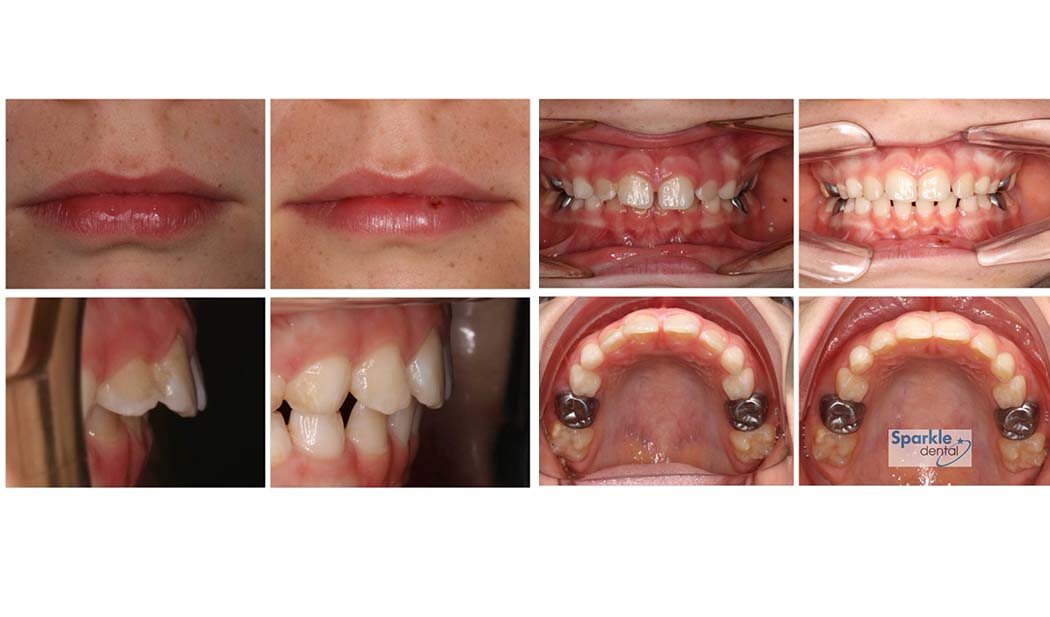I see a pattern of adults in my practice who present for upper lip-tie consultation. Their concern is that it is contributing to re-opening of space between the upper front central teeth after braces.
I will often determine the tongue is the bigger contributor to instability, compared to lip-tie. This photo is of one such patient.
These patients most usually have had healthy premolar teeth removed to alleviate dental crowding, and then the teeth are retracted back with braces to close the extra spaces.
In contrast to developing the jaw and tongue space, and making more room for the teeth to fit, this situation can compound the problem of poor tongue space, and oral dysfunction. It perpetuates lowered tongue posture and tongue thrust. In this photo, you can see how the tongue naturally rests against the back of the teeth. And these constant pressures at rest and during swallowing contribute to orthodontic instability, and in this case re-opening of dental spaces each and every day whilst the retainer is not worn.
When we don’t address poor jaw structures in childhood, it sets up a situation that is analogous to holistic dentist Dr Felix Liao’s book title – six-foot tiger in a three-foot cage. During sleep, the tongue will thrust forward with the mouth open or fall back into the throat – both situations disturbing sleep and creating chronic stress.
It’s not surprising that this patient has suffered with unrefreshed sleep, lethargy and excessive daytime sleepiness, anxiety, insomnia, teeth grinding, poor concentration and mild depression. Many of these symptoms have been present since childhood.
There are many clues that could have highlighted a need for early intervention long before the braces, including childhood mouth breathing. There is also a hidden-tongue tie that is most likely to have to contributed to the poor jaw development, poor sleep, perception of being tongue-tied during speech, and neck tension.
Extracting teeth to relieve dental crowding is not always the best answer.
In her case, I have proposed myofunctional therapy to help retrain normal resting posture, as she did find she could breathe more deeply when her tongue was sitting on her palate (as opposed to thrusting low and forward).
But we can do better by paying attention to the underlying oral dysfunctions (such as mouth breathing and tongue-ties) that contribute to crooked teeth and orthodontic instability, earlier.
The earlier we can address these, the greater potential we may be able to help improve many facets of a patient’s life, far beyond straight teeth.

